- PolPotEnjoyer : It's only bad because he didn't talk about banning all AI
- 64
- 138
Some wrongthink in the dead comments:
how do these assclowns never learn to not trust the government?
by "somecompanyguy", who has an important message in his bio
I mean seriously? guy takes a massive lead - steals data, and then proposes a license moat? come on. Fu*k this guy.
by "3327", who doesn't know he's shadowbanned
Sam Altman CEO of OpenAI cries Wolf to Senate panel, decides to play on the fear narrative (which politicians take hook, line and sinker) - - to call for licensing and regulation - - which only benefits major players, of course which huge pockets to bribe politicians even more.
Classic play to elbow out upstart small competitors . . . .
by "stevespang", who doesn't know he's shadowbanned
If safety standards is the r-slurred political correctness filter of chatGPT this will only lead to bad consequences
by "davidguetta", who doesn't know he's shadowbanned
I'm starting to think that OpenAI is a new Facebook, and their CEO is a dangerous butthole
- 114
- 135
No drama (yet), reposting for posterity.
Very little on orange site: https://news.ycombinator.com/item?id=39596491
Archive: https://archive.is/HfRvZ
Google's Culture of Fear
inside the DEI hivemind that led to Gemini's disaster
Mike Solana, Mar 4, 2024
Following interviews with concerned employees throughout the company, a portrait of a leaderless Google in total disarray, making it “impossible to ship good products at Google”
Revealing the complicated diversity architecture underpinning Gemini's tool for generating art, which led to its disastrous results
Google knew their Gemini model's DEI worldview compromised its performance ahead of launch
Pervasive and clownish DEI culture, from micro-management of benign language (“ninja”) and bizarre pronoun expectations to forcing the Greyglers, an affinity group for Googlers over 40, to change their name on account of not all people over 40 have grey hair
No apparent sense of the existential challenge facing the company for the first time in its history, let alone a path to victory
Last week, following Google's Gemini disaster, it quickly became clear the $1.7 trillion-dollar giant had bigger problems than its hotly anticipated generative AI tool erasing white people from human history. Separate from the mortifying clownishness of this specific and egregious breach of public trust, Gemini was obviously — at its absolute best — still grossly inferior to its largest competitors. This failure signaled, for the first time in Google's life, real vulnerability to its core business, and terrified investors fled, shaving over $70 billion off the kraken's market cap. Now, the industry is left with a startling question: how is it even possible for an initiative so important, at a company so dominant, to fail so completely?
This is Google, an invincible search monopoly printing $80 billion a year in net income, sitting on something like $120 billion in cash, employing over 150,000 people, with close to 30,000 engineers. Could the story really be so simple as out-of-control DEI-brained management? To a certain extent, and on a few teams far more than most, this does appear to be true. But on closer examination it seems woke lunacy is only a symptom of the company's far greater problems. First, Google is now facing the classic Innovator's Dilemma, in which the development of a new and important technology well within its capability undermines its present business model. Second, and probably more importantly, nobody's in charge.
Over the last week, in communication with a flood of Googlers eager to speak on the issues facing their company — from management on almost every major product, to engineering, sales, trust and safety, publicity, and marketing — employees painted a far bleaker portrait of the company than is often reported: Google is a runaway, cash-printing search monopoly with no vision, no leadership, and, due to its incredibly siloed culture, no real sense of what is going on from team to team. The only thing connecting employees is a powerful, sprawling HR bureaucracy that, yes, is totally obsessed with left-wing political dogma. But the company's zealots are only capable of thriving because no other fount of power asserts, or even attempts to assert, any kind of meaningful influence. The phrase “culture of fear” was used by almost everyone I spoke with, and not only to explain the dearth of resistance to the company's craziest DEI excesses, but to explain the dearth of innovation from what might be the highest concentration of talented technologists in the world. Employees, at every level, and for almost every reason, are afraid to challenge the many processes which have crippled the company — and outside of promotion season, most are afraid to be noticed. In the words of one senior engineer, “I think it's impossible to ship good products at Google.” Now, with the company's core product threatened by a new technology release they just botched on a global stage, that failure to innovate places the company's existence at risk.
As we take a closer look at Google's brokenness, from its anodyne, impotent leadership to the deeply unserious culture that facilitated an encroachment on the company's core product development from its lunatic DEI architecture, it's helpful to begin with Gemini's specific failure, which I can report here in some detail to the public for the first time.
First, according to people close to the project, the team responsible for Gemini was not only warned about its “overdiversification” problem before launch (the technical term for erasing white people from human history), but understood the nebulous DEI architecture — separate from causing offense — dramatically eroded the quality of even its most benign search results.
Roughly, the “safety” architecture designed around image generation (slightly different than text) looks like this: a user makes a request for an image in the chat interface, which Gemini — once it realizes it's being asked for a picture — sends on to a smaller LLM that exists specifically for rewriting prompts in keeping with the company's thorough “diversity” mandates. This smaller LLM is trained with LoRa on synthetic data generated by another (third) LLM that uses Google's full, pages-long diversity “preamble.” The second LLM then rephrases the question (say, “show me an auto mechanic” becomes “show me an Asian auto mechanic in overalls laughing, an African American female auto mechanic holding a wrench, a Native American auto mechanic with a hard hat” etc.), and sends it on to the diffusion model. The diffusion model checks to make sure the prompts don't violate standard safety policy (things like self-harm, anything with children, images of real people), generates the images, checks the images again for violations of safety policy, and returns them to the user.
“Three entire models all kind of designed for adding diversity,” I asked one person close to the safety architecture. “It seems like that — diversity — is a huge, maybe even central part of the product. Like, in a way it is the product?”
“Yes,” he said, “we spend probably half of our engineering hours on this.”
The inordinately cumbersome architecture is embraced throughout product, but really championed by the Responsible AI team (RAI), and to a far greater extent than Trust and Safety, which was described by the people I spoke with closest to the project as pragmatic. That said, the Trust and Safety team working on generation is distinct from the rest of the company, and didn't anchor on policy long-established by the Search team — which is presently as frustrated with Gemini's highly-public failure as the rest of the company.
In sum, thousands of people working on various pieces of a larger puzzle, at various times, and rarely with each other. In the moments cross-team collaborators did attempt to assist Gemini, such attempts were either lost or ignored. Resources wasted, accountability impossible.
Why is Google like this?
The ungodly sums of money generated by one of history's greatest monopoly products has naturally resulted in Google's famously unique culture. Even now, priorities at the company skew towards the absurd rather than the practical, and it's worth noting a majority of employees do seem happy. On Blind, Google ranks above most tech companies in terms of satisfaction, but reasons cited mostly include things like work-life balance and great free food. “People will apologize for meetings at 9:30 in the morning,” one product manager explained, laughing. But among more driven technologists and professionals looking to make an impact — in other words, the only kind of employee Google now needs — the soft culture evokes a mix of reactions from laughter to contempt. Then, in terms of the kind of leadership capable of focusing a giant so sclerotic, the company is confused from the very top.
A strange kind of dance between Google's Founders Larry Page and Sergey Brin, the company's Board, and CEO Sundar Pichai leaves most employees with no real sense of who is actually in charge. Uncertainty is a familiar theme throughout the company, surrounding everything from product direction to requirements for promotion (sales, where comp decisions are a bit clearer, appears to be an outlier). In this culture of uncertainty, timidity has naturally taken root, and with it a practice of saying nothing — at length. This was plainly evident in Sundar's response to Gemini's catastrophe (which Pirate Wires revealed in full last week), a startling display of cowardice in which the man could not even describe, in any kind of detail, what specifically violated the public's trust before guaranteeing he would once again secure it in the future.
“Just look at the OKRs from 2024,” one engineer said, visibly upset. Indeed, with nothing sentiments like “improve knowledge” and “build a Google that's extraordinary,” with no product initiative, let alone any coherent sense of strategy, Sundar's public non-response was perfectly ordinary. The man hasn't messaged anything of value in years.
“Sundar is the Ballmer of Google,” one engineer explained. “All these products that aren't working, sprawl, overhiring. It all happened on his watch.”
Among higher performers I spoke with, a desire to fire more people was both surprising after a year of massive layoffs, and universal. “You could cut the headcount by 50%,” one engineer said, “and nothing would change.” At Google, it's exceedingly difficult to get rid of underperformers, taking something like a year, and that's only if, at the final moment, a low performer doesn't take advantage of the company's famously liberal (and chronically abused) medical leave policy with a bullshit claim. This, along with an onslaught of work from HR that has nothing to do with actual work, layers tremendous friction into the daily task of producing anything of value. But then, speaking of the “People” people —
One of the more fascinating things I learned about Google was the unique degree to which it's siloed off, which has dramatically increased the influence of HR, one of the only teams connecting the entire company. And that team? Baseline far crazier than any other team.
Before the pernicious or the insidious, we of course begin with the deeply, hilariously stupid: from screenshots I've obtained, an insistence engineers no longer use phrases like “build ninja” (cultural appropriation), “nuke the old cache” (military metaphor), “sanity check” (disparages mental illness), or “dummy variable” (disparages disabilities). One engineer was “strongly encouraged” to use one of 15 different crazed pronoun combinations on his corporate bio (including “zie/hir,” “ey/em,” “xe/xem,” and “ve/vir”), which he did against his wishes for fear of retribution. Per a January 9 email, the Greyglers, an affinity group for people over 40, is changing its name because not all people over 40 have gray hair, thus constituting lack of “inclusivity” (Google has hired an external consultant to rename the group). There's no shortage of DEI groups, of course, or affinity groups, including any number of working groups populated by radical political zealots with whom product managers are meant to consult on new tools and products. But then we come to more important issues.
Among everyone I spoke with, there was broad agreement race and gender greatly factor into hiring and promotion at Google in a manner considered both problematic (“is this legal?”) and disorienting. “We're going to focus on people of color,” a manager told one employee with whom I spoke, who was up for a promotion. “Sounds great,” he said, for fear of retaliation. Later, that same manager told him he should have gotten it. Three different people shared their own version of a story like this, all echoing the charge just shared publicly by former Google Venture investor Shaun Maguire:
https://twitter.com/shaunmmaguire/status/1760872265892458792
Every manager I spoke with shared stories of pushback on promotions or hires when their preferred candidates were male and white, even when clearly far more qualified. Every person I spoke with had a story about a promotion that happened for reasons other than merit, and every person I spoke with shared stories of inappropriate admonitions of one race over some other by a manager. Politics are, of course, a total no go — for people right of center only. “I'm right leaning myself,” one product manager explained, “but I've got a career.” Yet politics more generally considered left wing have been embraced to the point they permeate the whole environment, and shape the culture in a manner that would be considered unfathomable in most workplaces. One employee I spoke with, a veteran, was casually told over drinks by a flirty leader of a team he tried to join that he was great, and would have been permitted to switch, but she “just couldn't do the ‘military thing.'”
The overt discrimination here is not only totally repugnant, but illuminating. Google scaled to global dominance in just a few years, ushering in a period of unprecedented corporate abundance. What is Google but a company that has only ever known peace? These are people who have never needed to fight, and thus have no conception of its value in either the literal sense, or the metaphorical. Of course, this has also been a major aspect of the company for years.
Let's be honest, Google hasn't won a new product category since Gmail. They lost Cloud infrastructure to AWS and Azure, which was the biggest internet-scale TAM since the 90s, and close to 14 years after launching X, Google's Moonshot Factory, the “secret crazy technology development” strategy appears to pretty much be fake. It lost social (R.I.P. Google+). It lost augmented reality (R.I.P. Glass). But who cares? Google didn't need to win social or AR. It does, however, need to win AI. Here, Google acquired DeepMind, an absolutely brilliant team, thereby securing an enormous head start in the machine god arms race, which it promptly threw away to not only one, but several upstarts, and that was all before last week's Gemini fiasco.
In terms of Gemini, nobody I spoke with was able to finger a specific person responsible for the mortifying failure. But it does seem people on the team have fallen into agreement on precisely the wrong thing: Gemini's problem was not its embarrassingly poor answer quality or disorienting omission of white people from human history, but the introduction of black and asian Nazis (again, because white people were erased from human history), which was considered offensive to people of color. According to multiple people I spoke with on the matter, the team adopted this perspective from the tech-loathing press they all read, which has been determined to obscure the overt anti-white racism all week. With no accurate sense of why their product launch was actually disastrous, we can only expect further clownery and failure to come. All of this, again, reveals the nature of the company: poor incentive alignment, poor internal collaboration, poor sense of direction, misguided priorities, and a complete lack of accountability from leadership. Therefore, we're left with the position of Sundar, increasingly unpopular at the company, where posts mocking his leadership routinely top Memegen, the internal forum where folks share dank (but generally neutered) memes.
Google's only hope is vision now, in the form of a talented and ferocious manager. Typically, we would expect salvation for a troubled company in the heroic return of a founder, and my sense is Sergey will likely soon step up. This would evoke tremendous excitement, and for good reason. Sergey is a man of vision. But can he win a war?
Google is sitting on an enormous amount of cash, but if the company does lose AI, and AI in turn eats search, it will lose its core function, and become obsolete. Talent will leave, and Google will be reduced to a giant, slowly shrinking pile of cash. A new kind of bank, maybe, run by a dogmatic class of extremist HR priestesses? That's interesting, I guess. But it's not a technology company.
-SOLANA
- forearmfondler55 : african?
-
ManBearFridge
: South Asian?

- 49
- 133
ok, this is a lot of fun https://t.co/XP46mvtlCA pic.twitter.com/glqP8HrdM9
— TracingWoodgrains (@tracewoodgrains) October 5, 2023
- 49
- 132
- DickButtKiss : Its over
- 160
- 131
Introducing Sora, our text-to-video model.
— OpenAI (@OpenAI) February 15, 2024
Sora can create videos of up to 60 seconds featuring highly detailed scenes, complex camera motion, and multiple characters with vibrant emotions. https://t.co/7j2JN27M3W
Prompt: “Beautiful, snowy… pic.twitter.com/ruTEWn87vf
Lots of seethe on Twitter. Discuss the societal implications, and what degenerate thing you're going to make when stable diffusion released their copy in a year!
Also, what will it take for Yann LeCum to admit he is wrong? We'll have AIs that simulate the future and he will still be arguing they aren't intelligent and his model (which is essentially the same thing) is better
- 56
- 130
- 0 : gibberish
- 61
- 130
OPNsense is an open source, FreeBSD-based firewall and routing software developed by Deciso, a company in the Netherlands that makes hardware and sells support packages for OPNsense. It is a fork of pfSense, which in turn was forked from m0n0wall built on FreeBSD.[3] It was launched in January 2015.[2] When m0n0wall closed down in February 2015 its creator, Manuel Kasper, referred its developer community to OPNsense.[4]
OPNsense has a web-based interface and can be used on the x86-64 platform.[5] Along with acting as a firewall, it has traffic shaping, load balancing, and virtual private network capabilities, and others can be added via plugins.[6] OPNsense offers next-generation firewall capabilities utilizing Zenarmor, a NGFW plugin developed by OPNsense partner[7] Sunny Valley Networks.
In November 2017, a World Intellectual Property Organization panel found Netgate, the copyright holder of pfSense, used the domain opnsense.com in bad faith to discredit OPNsense, and obligated Netgate to transfer domain ownership to Deciso.[9]
https://opnsense.org/opnsense-com/
Some of you may have come across OPNsense.com a domain that until September 21, 2017 was home to a controversial website with content targeted to harm our open source project.
On the fore mentioned date we filed a complaint with WIPO, the World Intellectual Property Organization to try and stop this website from being operated.
Until our legal action we were unable to determine the owner of the domains as it was registered using Domains By Proxy, LLC, however we believed the site was created by a pfSense enthusiast who had gone a step too far.
Much to our surprise we received an email on September 26, 2017 stating that the owner of this domain was in fact Jamie Thompson, Rubicon Communications dba Netgate also known for the competing pfSense project.
Maybe this should not have come as a surprise as ever since we created OPNsense they have tried to harm our project and aided in spreading false information, mostly done using anonymous accounts. Their aim has been to scare off new users and keep our project from Wikipedia, this way depriving others from making their own choice.
Their actions have been bad for the open source community as they undermine the very basic principles of open source.
Today we have been able to stop Netgate and although we are glad this chapter can be closed, it does not feel like a victory at all as the time, effort and money could have been spend much better.
The full text of the WIPO panel’s decision on OPNsense.com can be found here:
http://www.wipo.int/amc/en/domains/search/text.jsp?case=D2017-1828
The content of OPNsense.com prior to our action can still be seen on the WayBackMachine, the internet archive (beware it contains shocking material): https://web.archive.org/web/20160314132836/http://www.opnsense.com/
The video that was not cached contains scenes taken from the film “Downfall”, the historical war drama film depicting the final ten days of Adolf Hitler's rule over Nazi Germany, along with a comment reading “From deep within the OPNsense development bunker”.
[never before seen Schizocopy of the video
linked in op]
As Deciso, the company behind OPNsense we have not yet decided upon further action, but ask all who read this to push back to those who try to harm our community and open source in general.
As a final note, we wish to thank everyone for their overwhelming supporting and are proud to have witnessed the positive development of the project as a whole, a rapidly growing community and the next major release 18.1 almost at our doorstep.
Stay safe,
Your OPNsense team
!codecels !dramatards !schizomaxxxers discuss this unfathomably based and dramapilled company
- done_testing : Lowest effort fedpost
- 106
- 128
!codecels look at this cute twink frick horse shit! I the USER can't ignore this error. Firestrag decided that I must be too stupid to understand such things and therefore must not be allowed to ignore this non-fatal error for my own good. 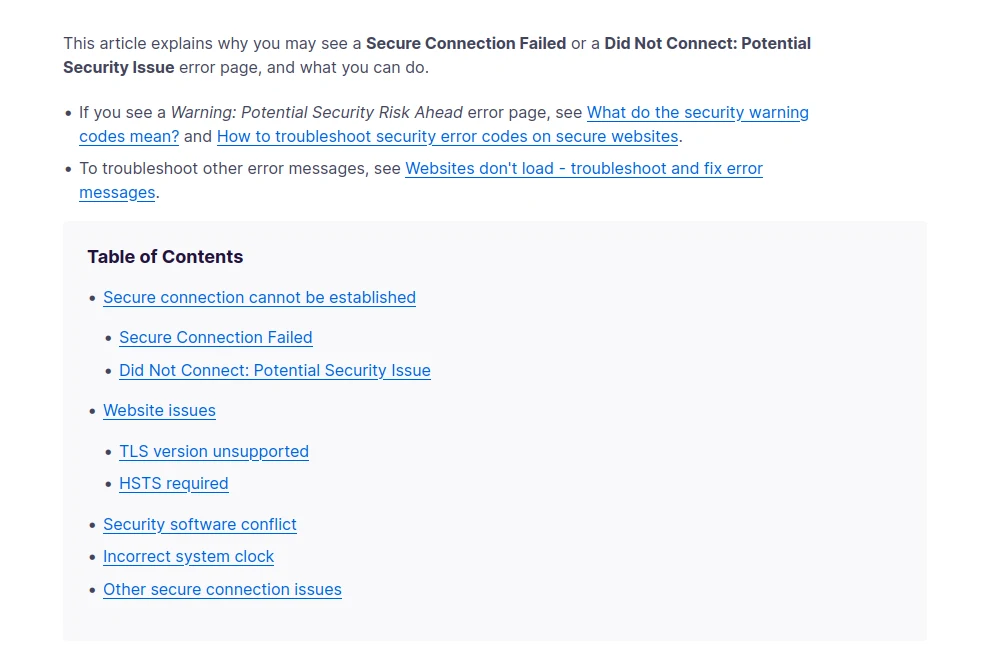
And frick all on the about page about making this fricking work.
And what do you, known bug for 10 fricking years and it's still broken out of the box.
The issue is most likely with the website, and there is nothing you can do to resolve it. You can notify the website's administrator about the problem.
Suck my peepee. You can stop being a ssl strag and LET ME VIEW THE FRICKING CONTENT I CLICKED ON
- 64
- 127
StackOverflow is bleeding money and for some reason has over 500 employees, a big number for a Q&A forum with an interface that's barely changed in a decade.
AI has cut into their profits so they're attempting to integrate it into their own search (ask a bot a question and get an answer). Sadly this hasn't helped much and so they've just fired 28% of their staff, only a few months after firing 10%.
Included in the layoffs are community managers (aka paid jannies), who are surely happy to be freed from what must be the worst job in the world (interacting with the insufferable unpaid jannies who hate every decision that their overlords make).
The announcement of the firings is on -197, let's see what the unpaid jannies think:
"The community isn't going anywhere." Well, they might go somewhere else if you keep firing all their beloved community managers and other Q&A teams... everyone left on the Community team now has, what, 3 years of experience with this community or less?
Oh no how can anyone be expected to moderate a Q&A forum with less than 3 years experience?
My favourite SO user Zoe is on strike (before you ask, yes they are) has a lot to say even though they're still meant to be on strike:
why, over the past two firings (and previous rounds), have you eliminated the CMs and other employees who were among the largest advocates for the community and who, in some of the worse periods, were the only communication channel with the company?

All these CMs do is get shit on by people like Zoe, arguing over pointless metadrama that doesn't impact any of the site's actual users in any way.
Someone thinks the world is ending:
It's worth considering that the biggest project that's set back is trust. Trust built over years - lost, points of contact we were familiar with no longer exist.
The practical effects are very much loss, sorrow and frankly a loss in confidence
From our vantage point, things look bleak. Really bleak. This dystopian view is not just a view, it's how we are living this relationship with SO. And this is very real, it's not simply a fleeting moment.

What will become of the development projects that Catija and other devs were involved in? There were some initiatives (such as mod tooling) she was acting as liaison on in the SO mod room.
How can I do it for free without tools?
Stack Overflow became what it is today because it was able to attract top-tier talent across all areas, both as employees and as volunteer content creators on the site. Top talent is choosy about where they work, and will choose to work where they feel respected and working on things they love. I hope that the company treated all laid off employees with the respect and compassion they deserve, and this is one important measure of that.
lol "top-tier" unpaid jannies, sure sure.
Meanwhile millions of people are Googling "how to sort list python" every day and copying the top answer from SO, unaffected by all of this meta-nonsense.
I hate SO jannies so so much, I can't believe SO hasn't realised that it would be easier to get rid of them and hire a small number of paid jannies. The site moderates itself with flags + downvotes, unpaid jannies are irrelevant.
- 50
- 127
From yesterday's exhibits in US v. Sam Bankman-Fried:
— Molly White (@molly0xFFF) October 7, 2023
The prosecution shows that the "insurance fund" that FTX bragged about was fake, and just calculated by multiplying daily trading volume by a random number around 7500 pic.twitter.com/EDiVPOHODP
orange site sneeds: https://news.ycombinator.com/item?id=37804493
- 35
- 126
A study found that anti-piracy messages work on women but actually make men MORE likely to pirate (because dudes rock  ).
).
Meanwhile the rest of the comments have entirely too many people fully admitting that they don't pirate because they "have too much to lose" and apparently don't know what a fricking VPN is, which is a truly darning indictment of what used to be one of the best tech-literate forums on the interwebs.
- Shellshock : transb-word alt
- b0im0dr : >implying a low-level assembly/C/HolyC programmer is a rslur who cant even string together an XSS
- TedBundy : neighbor stole it off someone, this is transb-word on an alt
- 67
- 126
TempleOS, that esoteric operating system developed by a schizophrenic guy who loved saying the n word. You've probably heard of it and occasionally get reminded of its existence when you see  and
and  . It's probably of no value and only /g/ schizos use it to get called a gigachad, don't they? Who else could _possibly_ use it? Well, here's one that went as far as to porting it to ring 3 and blogposts about it on rDrama of all sites because hes too lazy to even setup a https://github.io blog.
. It's probably of no value and only /g/ schizos use it to get called a gigachad, don't they? Who else could _possibly_ use it? Well, here's one that went as far as to porting it to ring 3 and blogposts about it on rDrama of all sites because hes too lazy to even setup a https://github.io blog.
Ok, interested? So basically I effectively made TempleOS an app that can be launched from Linux/Windows/FreeBSD and be used as either an interpreter that could be run from the command line, or as just a vm-esque orthodox TempleOS GUI that you could use just like TempleOS in a VM, just faster (no hardware virtualization overhead) and more integrated with the host. It doesn't have Ring 0 routines like InU8 so it doesn't have that "poking ports and seeing what happens" C64core fun though, so keep that in mind.
It also has a bunch of community software written for TempleOS like CrunkLord420's BlazeItFgt1/2, a DOOM port, and a CP/M emulator written in HolyC. Try them out! There's also networking implemented with C FFI and an IRC server+client and a wiki server in the repository that uses it, if you're concerned whether Terry would think it's orthodox, it's totally ok. You could read more about why in the repo readme.
Here's a simple showcase, this would show you the gist/rationale of making this software.
So let me go on a journey of longposting about how I ported TempleOS to Ring 3.
Step 1. The kernel
There's a _lot_ of stuff in TempleOS that's ring 0 only. No wonder, since Terry always was adamant about being able to easily fuck with the hardware in a modern OS. But on the other hand, this makes porting TempleOS a _lot_ easier. Since the whole operating system is ring-0 only and is a unikernel, every processes share the same address space and that means you could run all the kernel code confined in a single process running on top of another opreating system and have no problems with context switching and system calls, they're all just going to be internal function calls inside the process itself.
Now with this idea, what could we do? We have to study the anatomy of the kernel to be able to port it, of course.
This blog explains it in much more detail, but here's the gist:
You have a bunch of code, but it's incomplete. There's a "patch table" that has the real relocation addresses for the CALL addr instructions, and you fill them in, this sounds easy enough. Plus, TempleOS already has the kernel loader written. We're sneeding that.
Here's some of the code, but it's irrelevant. Let's move on.
But wait, it shouldn't be this easy. How does TempleOS layout its memory? Let's check the TempleOS docs. Did I mention TempleOS is far more well documented than any other open source software in the world?
Step 1.5. The memory and the poop toad in the secret sauce
That's amazing! Let me quote a few important parts:
So what does this mean? We need RWX (read+write+execute) memory pages mapped in the process' lower 2 gigabytes, and normal memory maps anywhere else. This is great because we don't have to care too much about where we should place memory. Plus, memory is "identity-mapped" (host memory would directly mirror TempleOS' internal memory addresses) so no worries about address translation.
Here's the code only for the POSIX part of the virtual page allocator because it's more elegant. It's a simple bump allocator with mmap. Works on all Unixes except OpenBSD because they won't allow RWX unless you do weird stuff like placing the binary on a special filesystem with special linker flags because of security theater measures. Theo , nobody uses your garbage.
, nobody uses your garbage.
End step 1.5
We're going to have to strip out all the stuff that does ultra low-level boot/realmode stuff. This was a really long tedious thing to do and I'm not enumerating everything I removed. Ok, so what's next?
Step 2. Getting it to compile
How are we going to get this to compile in the first place? Well, turns out the HolyC compiler can AOT compile too alongside the JIT compilation mode it's known for.
So we write a file that just includes all the stuff to make a kernel binary. This part is very short but we're in for a ride, bear with me.
Step 3. i can haz ABI plz?
How do we call HolyC code from C, and vice versa? Intuitively you should know that this is a requirement. Let's check the docs again.
Ok, cool. This means that
1. TempleOS ABI is very simple
All arguments are passed on the stack, Variadics are also very easy. Take a look at this disassembly:
PUSH 0043BBED pushes the address for the string "Hello rDrama" on the stack, PUSH 17 pushes 0x17(23), the second argument to the stack. PUSH 02 means there are two variadic arguments, and you could access it from the function as argc. argv points the start of the two variadic arguments we pushed on the stack. Much simpler than the varargs mess you see in C, right?
Here's an additional diagram for a C FFI'd function that the HolyC side calls variadically.
2. FS/GS is used for thread-local storage - the current process in use and the current CPU structure the core has.
 this is VERY important. Don't miss this if you're actually reading this stuff. All HolyC code is a coroutine, you call Yield() explicitly to switch to the next task. There is no preemptive multitasking/multicore involved. Everything is manual. Fs() points to the current task which gives HolyC code a OOPesque
this is VERY important. Don't miss this if you're actually reading this stuff. All HolyC code is a coroutine, you call Yield() explicitly to switch to the next task. There is no preemptive multitasking/multicore involved. Everything is manual. Fs() points to the current task which gives HolyC code a OOPesque this pointer that you pass in routines involving processes, and you can use them for any process - be it yours or another task and easily play around with them.
So how do we implement Fs and Gs? Simple, thread-local variables in C. We'll come back to C very soon
Sorry if you were disappointed in the implementation, lol
3. Saved registers
You save RBP, RSI, R10-R15. That's the only requirement for calling into/being called from HolyC.
Here's how I implemented HolyC->C FFI. Save all the HolyC registers, and have placeholders for CALL instructions that you fill in later, kinda like the TempleOS kernel itself. We move the HolyC arguments' starting address to the first argument in the host OS' calling convention, so an FFI'd C function looks like this:
How do we implement C->HolyC FFI btw? Well, it's vice versa, but this time we push all the host OS' register/stack arguments on the HolyC stack.
I wrote a complete schizo asm generator for this that I assemble & link into the loader.
Step 4. Seth, bearer of multicores
The core task in TempleOS in called Seth, from a bible reference. This turned out to be relatively easy, after we load the kernel and extract the entry points from it, we simply execute all of them in the core with the FFI stuff we just wrote above.
 This shouldn't be this easy. What are the caveats? And what are those signal handlers?
This shouldn't be this easy. What are the caveats? And what are those signal handlers?
Well, we need to add Ctrl-Alt-C support, which is basically CTRL^C in TempleOS. HolyC, as mentioned above, doesn't have preemption, so an infinite loop without a yield will freeze the whole system. How do we break out of this?
We use signal handlers in Unix for this. Basically we use the idea that the operating system will force execution to jump to the signal handler when a signal is raised.
On Windows, it's a bit more sassy. Windows has the ability to suspend threads remotely and get a dump of the registers, and resume it.
Step 5. User Input/Output
I use SDL for the GUI input/output and sound (TempleOS has BIOS PC speaker mono beeps for sound, it's very simple), and libisocline for CLI input. I'm not going into super specifics because it's boring as fricc.
Step 6. Filesystem integration
TempleOS uses drive letters like C: and D:. We need to translate these ondemand for the kernel to access files.
This is the heart of the virtual filesystem. It's quite simple. We just strcpy a directory name into a thread-local variable, and basically have an alphabet radix table.
I just wanted to show you guys this part. It's a file truncation routine & its super lit, we can throw HolyC exceptions from C because throw() is a function in HolyC.
Small "logic switch" thing I did for the poor man's Rust match, thought it was neat. (Writing EXODUS in Rust would not be fun. Unsafe Rust gets ugly quick, and I've tried writing some unlike the /g/ chuds)
Step 7. Debugging
Now, we've almost reached the end. At this point, you can run stuff just fine with our TempleOS port. But, how do we debug HolyC code?
TempleOS has a very, _very_ primitive debugger. I thought this was _too_ primitive for my taste, so I gave it a modern spin:
Looks much better, and more orthodox in a way.
I just dump all the registers when I catch a SIGSEGV or anything else that indicates a bug and send it to the HolyC side.
Step 7.5. Backtrace
How do we get the backtrace of the HolyC functions? Fear not, because the kernel calls a routine that adds all the HolyC symbols to the C side's hash table in the boot step. Now that we have all the symbols what do we do?
Here's the anatomy of an x86_64 function if you don't know:
RBP(stack BASE pointer) points to the previous RSP(stack pointer) of the callee of the function, and RBP+8 points to the return address, which means where the function, after returning, will resume its execution at. Now with this knowledge, how do we implement a backtrace?
We keep drilling down the call stack and grabbing RBP+8's so we know which functions called the problematic function, and find the address offsets in the symbol table with a linear search.
end step 7.5
Congratulations, this is the end. This probably covers more than your average university CS semester. My stupid ass can't articulate this in a juicier way  sorry.
sorry.
Trivia
Terry never used dynamic arrays (vectors). He always used circular doubly-linked lists because they're much more elegant to use in C. Really, there's no realloc too. (
 <(data locality be damned) its actually not that bad.)
<(data locality be damned) its actually not that bad.)HolyC typecasts are postfix, this is to enable stuff like
HashFind(...)(CHashSrcSym*)->memberwhich makes pseudo-OOP much cleaner. HolyC has primitive data inheritance. (this one is code to retrieve a symbol from a hash table, HashFind returns aCHash*butCHashSrcSyminherits fromCHash)"abcd %d\n",2;is shorthand for printfHolyC has "subswitches", like destructors and constructors for a range of cases.
Cool, huh? It's very useful for parsers.
I mentioned this eariler but let me reiterate: All HolyC code is a coroutine. You explicitly yield to Seth, the scheduler, for context switching between tasks. This is how cooperative multitasking should be done, but only Go does it properly, but even then they're not the real deal by mixing threads with coroutines.
IsBadReadPtr() on Windows friccin sucks. Use VirtualQuery. You can do the same thing in Unixes with msync(2) (yeah wtf. it's originally for flushing mmapped files but hey, it works)
There's a ton I left out for the sake of brevity but I invite you to read the codebase if you want to dig deeper.

Big thanks to nrootconauto who introduced me and led me through a lot of Terry's code and helped me with some HolyC quirks. He has his own website that's hosted on TempleOS and it's lit. Check it out.
There's probably more but I think this is enough. Thanks for reading this, make sure to leave a star on my repo if you can 
- 90
- 126
- 86
- 126
Of course they did. Powerjannies have no backbone except to powertrip on the only thing they have in their pathetic little lives, Reddit.
Also lmao Reddit won a phyrric victory at best
Orange Site
https://news.ycombinator.com/item?id=37003134

- 54
- 126
Follow up to the previous post: https://rdrama.net/h/marsey/post/174770/marsoyhype-its-over-for-artcels-with
Found out on this Github discussion post (quite a  but basically a web UI for StableDiffusion wants to emulate what Photoshop's able to do) that the generative fill nonsense can be used on their Firefly site: https://firefly.adobe.com/
but basically a web UI for StableDiffusion wants to emulate what Photoshop's able to do) that the generative fill nonsense can be used on their Firefly site: https://firefly.adobe.com/
This weekend someone told me that you do not really need an Adobe Subscription to use Firefly, and the popular Generative Fill can be used from their website (even without an Adobe account)!
After learning about this, I tested that Firefly Generative Fill with some test images used during the development of ControlNet. The performance of that model is super impressive and the technical architecture is more user-friendly than Stable Diffusion toolsets.
Overall, the behaviors of Adobe Firefly Generative Fill are:
1. if users do not provide any prompts, the inpaint does not fail, and the generating is guided by image contents.
2. if users provide prompts, the generating is guided by both prompts and image contents.
3. Given its results, it is likely that the results with or without prompts are generated by a same model pipeline.
They're right about not needing an Adobe subscription to use it but you still need to have an Adobe account so make a throwaway one or something if you're afraid of the glowies 
Just thought it might be interesting if you saw the earlier post but didn't want to install Photoshop from a random Google drive link or something  or you're using a Chromebook like me
or you're using a Chromebook like me
The generated images might not be super duper great or anything but it's pretty decent if it's just some simple shenanigans I guess, plus it's free (apart from Adobe collecting your user data  )
)
-
BWC
:

- 0 : no coiners having a go at it; rDrama might know less about crypto than they know about women
- JohnnyBOO : Crypto literally does nothing tard
- MARFAN_EATS_DOODOO : Lmao rDrama has unironic cryptocopers
- 93
- 125
Context: Multichain's CEO has been AWOL since May, leaving the rest of the team without access for server maintenance. There were early rumours that he was arrested by the Chinese government, but there's been no confirmation of that.
Yesterday, several of their contracts were drained to unknown addresses, with a total value of over $126m.
This is not the first time they've had trouble - they were hacked in 2022, but for a measly $3m.
https://twitter.com/MultichainOrg/status/1677180114227056641
https://twitter.com/MultichainOrg/status/1677096839731097600
Various people crying about their magic internet money:
https://twitter.com/VCosta7989126/status/1677131886248841217 (most of the replies to this are people trying to scam him when he has no money now lol)
- 41
- 125
https://mstdn.games/@chris/110553477682106144
PSA: #Reddit is restoring deleted and overwritten posts to save what they consider "their data". This is a new low and probably illegal at least in Europe. You can send a GDPR or CPRA request here: https://www.reddit.com/settings/data-request
These are screenshots of my profile on June 14th before and after overwriting and then deleting all my posts with Powerdelete. Today, June 16th all my posts have been restored by Reddit without my knowledge or consent.
-
paparia
:

- 114
- 124
ChadNet:
https://wiki.chadnet.org/computers-and-internet
Chadnet was a personal project from someone in the Dissident Right sphere but does include some great archives on their wiki about tech, political sperging, survival skills and How To Resist Interrogation.
Floodgap:
Floodgap is a very nice website about retro-computing, retro-software and hacking by an old-school boomer tech wizard Cameron Kaiser.
Ti-Basic Development:
Basically what it says. A repository on developing on the TI-Basic calculator line.
https://tibasicdev.wikidot.com
LowTechMagazine:
An independent magazine ran by Kris De Decker, a Dutch enthusiast for "low" tech solutions for current problems and projects. The cool thing about their site is that it's hosted on a solar-powered server in Barcelona so may be down sometimes! They're selling all their articles collated into hardback volumes for pretty cheap too. Good stuff.
https://solar.lowtechmagazine.com/power
UnixSheikh:
Pretty nifty site by a Xoomer programmer. Good rants and articles about feature creep and bloat in tech.
https://unixsheikh.com/about.html
AnalogOffice:
An actual woman espouses the simple joys of office stationary and analogue technology. Also does write-ups on organisation methods.
https://analogoffice.net/about
CiphersByRitter:
Amazing resource on cryptography by Terry Ritter. Basically anything you could need has an article about it here.
DigDeeper:
Beyond some insightful articles on technology with a particular focus on privacy I've really enjoyed his Op-Ed on the Coronavirus pandemic. Loads of references and an easy read!
https://digdeeper.neocities.org/articles/corona
VitaminDWiki:
The project of a single-minded dude who collated the biggest archive of information on Vitamin D I've seen. Awesome stuff.
Macroevolution:
Website by Eugene M. McCarthy, a geneticist with a specialisation in hybrids.
https://www.macroevolution.net/introduction.html
Ray Peat:
Incredible resource on nutrition with a focus on physiological chemistry (vitamins, enzymes, hormones etc..). Ray Peat is a woke chud with some great articles and advice.
TheHomeGunsmith:
Philip A. Luty was a normal citizen in the UK when the government introduced their firearms ban in the 90s. In response, he developed the Luty submachine gun made from simple DIY store materials in protest to the ban which he made all his plans and schematics public on the Internet and his website. It's still up and running with his original docs on his projects. Although surpassed by current 3D Printing tech it's still a very interesting piece of history to read yourself.
Dany is a hobbyist in electronics with a focus on reverse-engineering old soviet electronics to make the schematics public. Does some great projects and runs a youtube channel called DiodeGoneWild where he documents his projects.
https://danyk.cz/index_en.html
Nobody Here:
Some random Dutch dude creates an interactive site with 100s of different parts for his own self-expression including a forum where everyone poses as bugs.
Piero Scaruffi:
A cognitive behaviour researcher has maintained his personal site full of his own shitposting and essays since the late 90s. Cool stuff in there.
Bruce McEvoy:
Maintained since 1994! Bruce MacEvoy has a very stylish webpage with various archives on astronomy including a guide on how to make your own personal observatory. He also has a very detailed page on UFOs, Color Theory, Painting and Ludwig Wittgenstein's philosophy. Interesting dude for sure.
IdleWords:
A soyboy techie (but one of the good ones :3 ) who done a very excellent essay on the "Website Obesity Crisis" ie. BLOAT
https://idlewords.com/talks/website_obesity.htm
!chuds !nonchuds !besties share your hot goss and secret knowledge 
- 101
- 124
Eh, inflation has happened, and taxes, medical bills, and real estate are insane these days. So much so that you can't live a "normal" life of the standards of 20 years ago with less than $500K+ in salary. (At normal "middle class" modest levels of life hat's $250K after taxes, $200K after medical expenses, $150K after rent, $100K after food, $50K after transportation, $25K after food ...)
Sounds outrageous but most people have been brainwashed into thinking living with roommates in a cramped flat full of mildew, giving up all dreams of owning a home, and driving an old, unsafe car is the new norm.
Given that, $10M isn't really that much, considering you need to hire software devs to do any of the work they propose, and those software devs are getting $500K+ offers everywhere else.
- 37
- 124
Despite repeated warnings over a decade, a steady flow of email traffic continues to the .ML domain, the country identifier for Mali, as a result of people mistyping .MIL, the suffix to all US military email addresses.The problem was first identified almost a decade ago by Johannes Zuurbier, a Dutch Internet entrepreneur who has a contract to manage Mali’s country domain.
Zuurbier has been collecting misdirected emails since January in an effort to persuade the US to take the issue seriously. He holds close to 117,000 misdirected messages—almost 1,000 arrived on Wednesday alone. In a letter he sent to the US in early July, Zuurbier wrote: “This risk is real and could be exploited by adversaries of the US.”
Funniest part of the story. They're reporting this one instance, but they have been doing this consistently FOR A DECADE.




- 88
- 123
In case you wanted to trust Scroogle and the US Government even less!
Federal investigators have ordered Google to provide information on all viewers of select YouTube videos, according to multiple court orders obtained by Forbes. Privacy experts from multiple civil rights groups told Forbes they think the orders are unconstitutional because they threaten to turn innocent YouTube viewers into criminal suspects.In a just-unsealed case from Kentucky reviewed by Forbes, undercover cops sought to identify the individual behind the online moniker “elonmuskwhm,” who they suspect of selling bitcoin for cash, potentially running afoul of money laundering laws and rules around unlicensed money transmitting.
In conversations with the user in early January, undercover agents sent links of YouTube tutorials for mapping via drones and augmented reality software, then asked Google for information on who had viewed the videos, which collectively have been watched over 30,000 times.
The court orders show the government telling Google to provide the names, addresses, telephone numbers and user activity for all Google account users who accessed the YouTube videos between January 1 and January 8, 2023. The government also wanted the IP addresses of non-Google account owners who viewed the videos. The cops argued, “There is reason to believe that these records would be relevant and material to an ongoing criminal investigation, including by providing identification information about the perpetrators.”......


- 41
- 123
Tldr Netgate paid some codecel to implement a wireguard kernel module for freebsd. He spent six months writing it and the code was butt. The codecel who invented wireguard nooticed their implementation sucked and spent a week rewriting it (and he Did It For Free). Absurd Netgate sneed was generated
WireGuard is a virtual private network protocol. It is designed to offer simplicity, speed, and strong security features.
Netgate is a company that specializes in providing hardware and software solutions for networking and security. They are well-known for their pfSense® software, which is an open-source firewall and routing platform based on FreeBSD.
Although WireGuard landed in the Linux kernel first, its inclusion in FreeBSD's kernel has long been on the general roadmap. In February 2020, FreeBSD developer Matt Macy pushed the first WireGuard-related commit to FreeBSD. Macy's work was directly commissioned by Netgate, the company behind the BSD-based pfSense router distribution.
After nearly a year's work, Macy's port was imported to the kernel scheduled for FreeBSD 13.0-RELEASE, which is expected to launch in 15 days. Unfortunately, there was a problem—after WireGuard's own Jason Donenfeld reviewed it alongside several FreeBSD and OpenBSD developers, it was judged unready for prime time
[...] This, understandably, presented a major problem for Donenfeld—although the WireGuard protocol itself is open source, there is more to a project than its code. Much of what propelled WireGuard's meteoric rise in the first place is its brevity and code correctness, as assessed by Linux founder Linus Torvalds and reflected by the project's reliability and lack of major flaws since becoming popular. A less than stellar implementation in FreeBSD could damage WireGuard's brand—possibly irrevocably.
https://lists.zx2c4.com/pipermail/wireguard/2021-March/006494.html
Sometime ago, a popular firewall vendor tasked a developer with writing a WireGuard implementation for FreeBSD. They didn’t bother reaching out to the project. That’s okay, I figured, I’ll reach out and see if I can help and coordinate. What followed over the next year was a series of poor communications – messages unanswered, code reviews ignored, that kind of thing. [...] Matt Dunwoodie, who worked on the OpenBSD implementation, also took a look at what had become of that implementation in FreeBSD. Over the next week, the three of us dug in and completely reworked the implementation from top to bottom, each one of us pushing commits and taking passes through the code to ensure correctness. The result was [6]. It was an incredible effort. The collaboration was very fast paced and exciting. Matt and Kyle are terrific programmers and fun to work with too.
The first step was assessing the current state of the code the previous developer had dumped into the tree. It was not pretty. I imagined strange Internet voices jeering, “this is what gives C a bad name!” There were random sleeps added to “fix” race conditions, validation functions that just returned true, catastrophic cryptographic vulnerabilities, whole parts of the protocol unimplemented, kernel panics, security bypasses, overflows, random printf statements deep in crypto code, the most spectacular buffer overflows, and the whole litany of awful things that go wrong when people aren’t careful when they write C. Or, more simply, it seems typical of what happens when code ships that wasn’t meant to. It was essentially an incomplete half-baked implementation – nothing close to something anybody would want on a production machine. Matt had to talk me out of just insisting they pull the code entirely, and rework it more slowly and carefully for the next release cycle. And he was right: nobody would have agreed to do that, and it would only have fostered frustration from folks genuinely enthusiastic about if_wg. So our one and only option was to iteratively improve it as fast as we could during the two weeks before release, and try to make it as simple and close as possible to OpenBSD so that we could benefit from the previous analysis done there. With that as our mission, we set out auditing and rewriting code.
Netgate starts sneeding, threatens to never use wireguard again, snitches to the codejannies
https://lists.freebsd.org/pipermail/freebsd-hackers/2021-March/057082.html
On Mon, Mar 15, 2021 at 6:08 PM Scott Long [scottl at netgate.com] wrote: None of these actions reflect good-faith collaboration, and your statements that you think that our work is "really cool" ring hollow. Maybe you and Kyle are really naive and thought that this was how people normally collaborate in the security and business worlds, and that everyone would rush to praise you and shower you with contracts and funding. And hey, maybe that’ll happen, you certainly have made a splash. That of course, comes at our expense, and it’s likely to be a pretty damaging one. Now with the Ars article, I’m starting to wonder if this was a coordinated smear campaign. Normally we don’t get this kind of attention. It’s going to be painful to navigate our way out.
I’ll be writing an article tonight outlining the mistakes that we made and what we will be doing to correct it. I’ll also be highlighting that this incident has been a textbook example of the wrong way for people to collaborate in the security community, and that extreme caution should be taken in any future dealings with you. Your actions are self serving and in bad faith, and your words are hollow and untrustworthy. I don’t care if you disagree or don’t see it this way, this is the effect that you’ve had.
I’ve also spoken with the FreeBSD Security Officer, and we’ve agreed that wireguard will be removed from all branches of FreeBSD until further notice. I’ve also informed Kyle of this. I do not support its reintroduction into FreeBSD, whether in the src tree or in the ports tree, at this time. As for pfSense, we are conducting an audit and will decide on the best course of action for our customers and our company.
Wireguard inventor replies:
Hi Scott,
It's certainly disappointing to receive your email like that. I see that you're really upset, and I think we have a shared interest in deescalating this. You've mentioned the desire to talk about this in public, so I'm responding in the announcement thread to you, as this seems like the appropriate venue for discussion. I've also CC'd the FreeBSD Security Officer.
From your end, it's very disappointing that you're (below) planning to attack security researchers and kernel programmers who took the time to rewrite code to make it better, hustling to get it in before FreeBSD 13 is released.
Threatening that you're going to highlight "that extreme caution should be taken in any future dealings with you" sounds to me like a threat of some intense slander. And again, attacking security researchers and kernel programmers who took time to rewrite code to make it better before a release deadline... That's ...wow. I wish you would not go on the attack like that.
Instead, it seems like we can both be glad that we're on the path to having better code! And that there's a team of people volunteering to do this and enjoying writing that code. We're all working together to make things better. We worked really super hard on fixing up this code base. It was a LOT of work. And I would like to keep working on it and feeling good about it.
So I'm just disappointed that somehow this has devolved for you into making threats like that.
I hope this can deescalate, and we can work together on this. I'm confident that our goals are ultimately aligned very well.
Netgate continues to 
https://www.netgate.com/blog/painful-lessons-learned-in-security-and-community
So what have I learned from this? I’ve learned to be a little less trusting. I’ve learned to be more proactive in defending against people who have ulterior motives. I’ve learned that people who emphatically say that they’re here to help often aren’t. This was definitely not the positive collaborative experience that I alluded to at the beginning of this blog. Does that mean that I don’t believe in community collaboration anymore? I hope not. Enduring an attack this insidious needs the strength that comes from the community. We need everyone’s help to continue to improve both FreeBSD and the pfSense software and build a strong security community. We need to work together, be transparent, be respectful, and leave our egos at the door. We continue to be committed to quality, community, transparency, and security. Please join us in this effort.
!soren @gaslighter !codecels !schizomaxxxers !effortposters
@HeyMoon
@grizzly
@Aevothy discuss
- 30
- 123
in the late 2000s there was a failed academic landgrab in the digital humanities called "critical code studies", where non-programmers tried to conduct critical readings of code snippets. it went about as well as you would expect
— you-have-just-experienced-things (@y_h_j_e_t) May 28, 2023
gonna post some of my fav quotes in this thread
Just lol







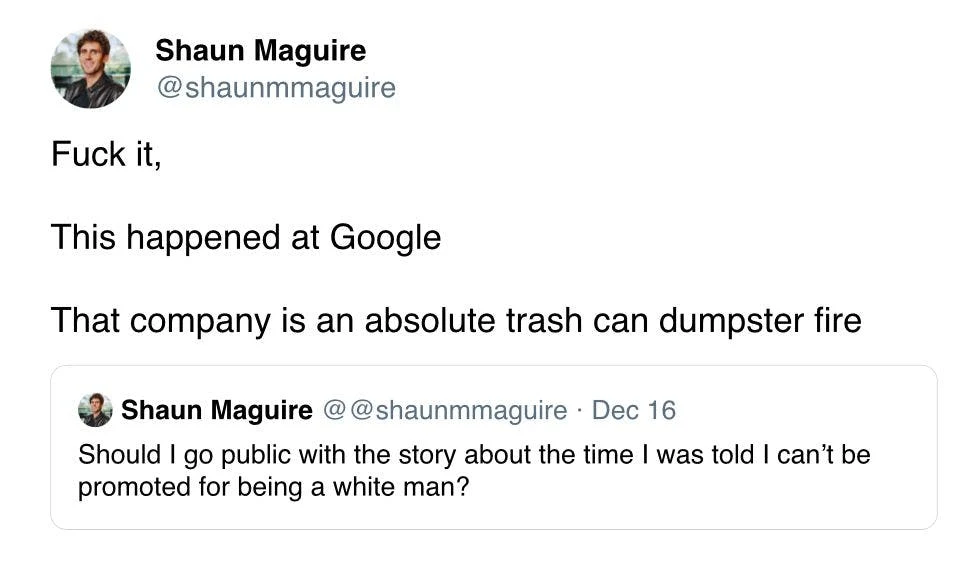








 science discovers the "Balmer Peak": A specific blood alcohol content (.045 +/- .005) that confers superhuman programming abilities
science discovers the "Balmer Peak": A specific blood alcohol content (.045 +/- .005) that confers superhuman programming abilities

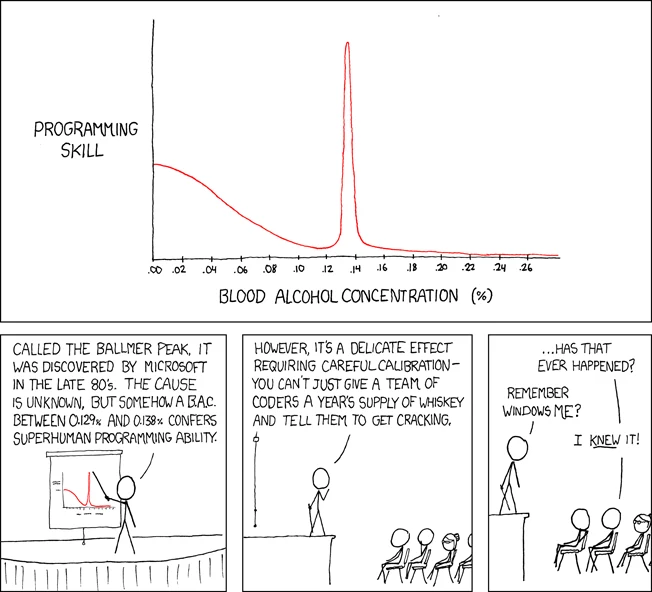















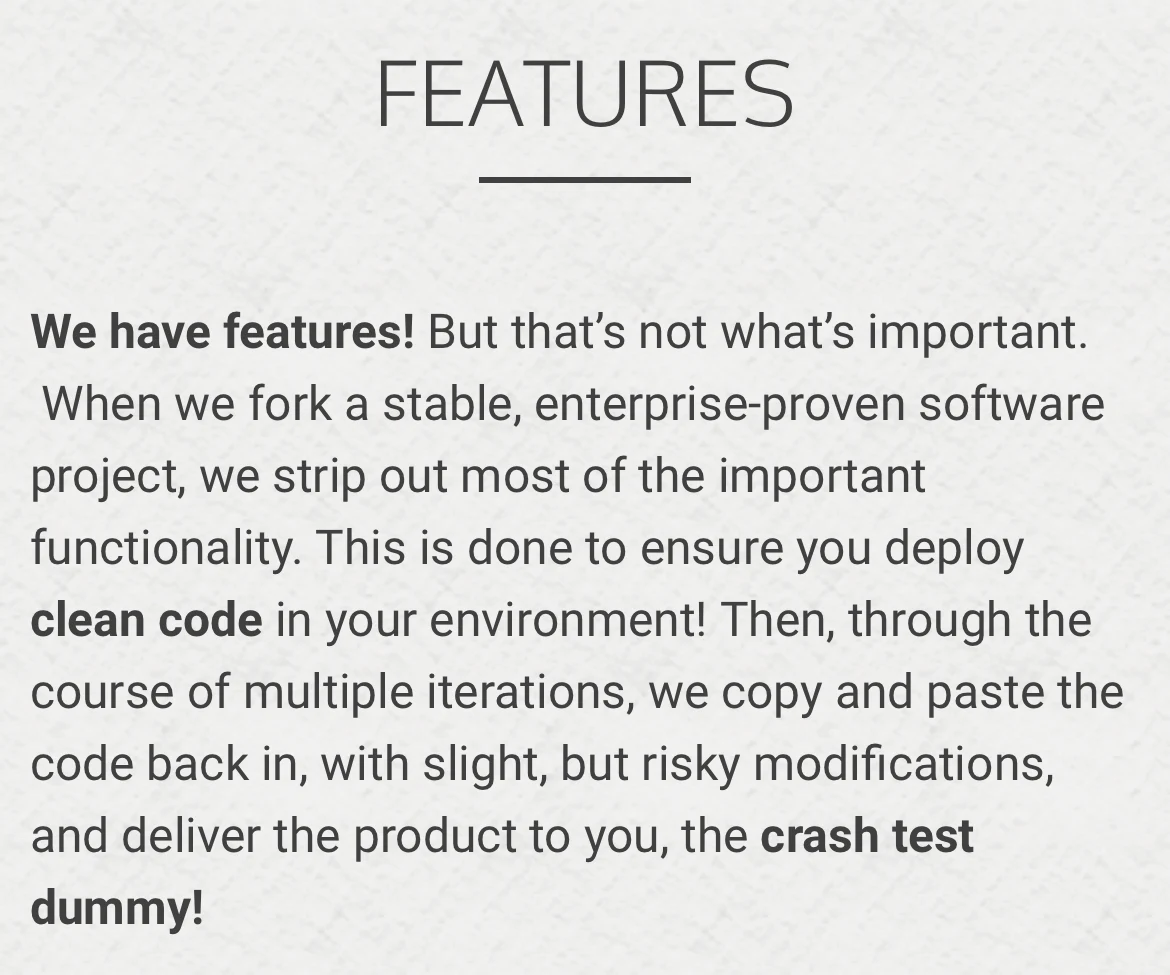
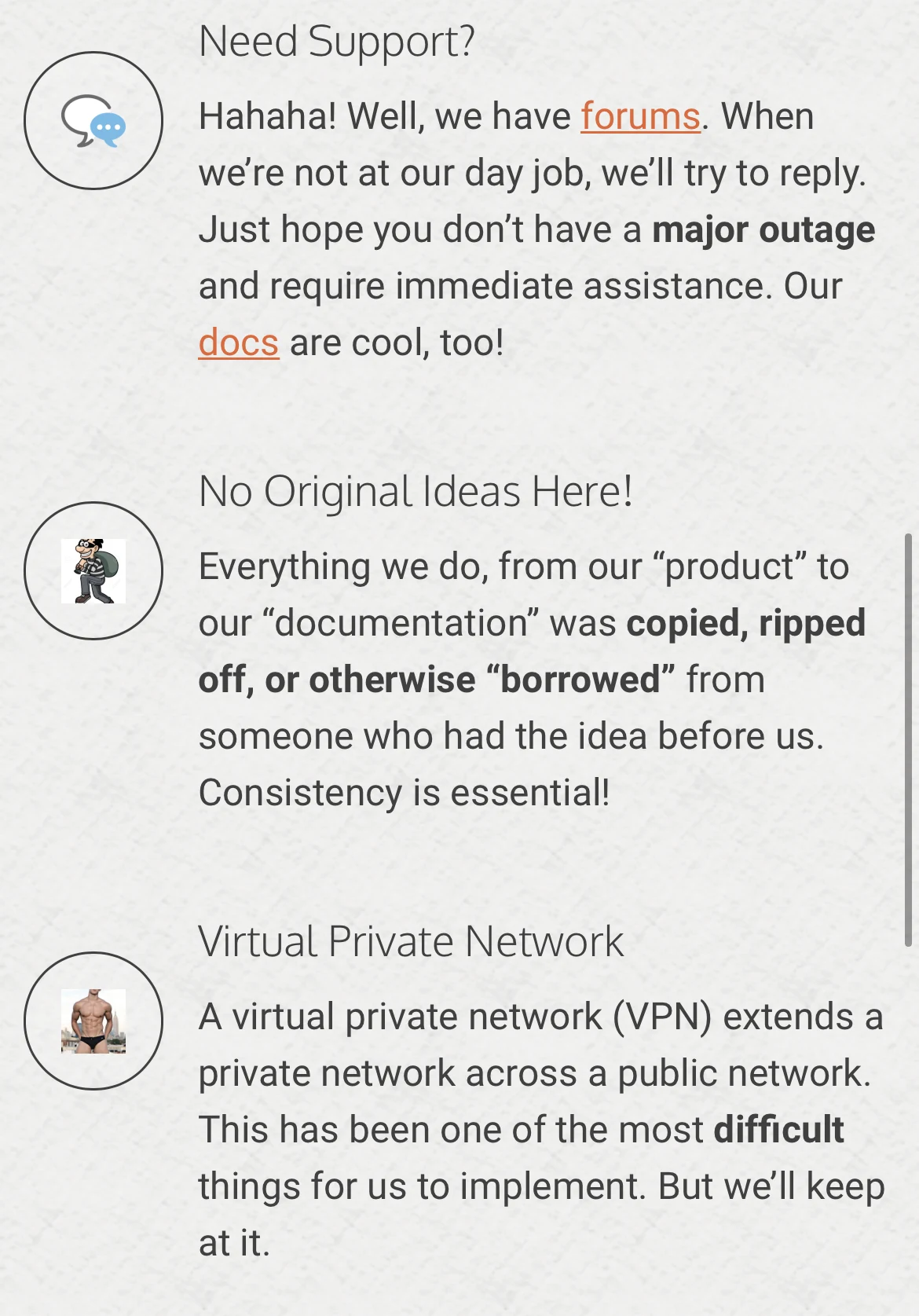
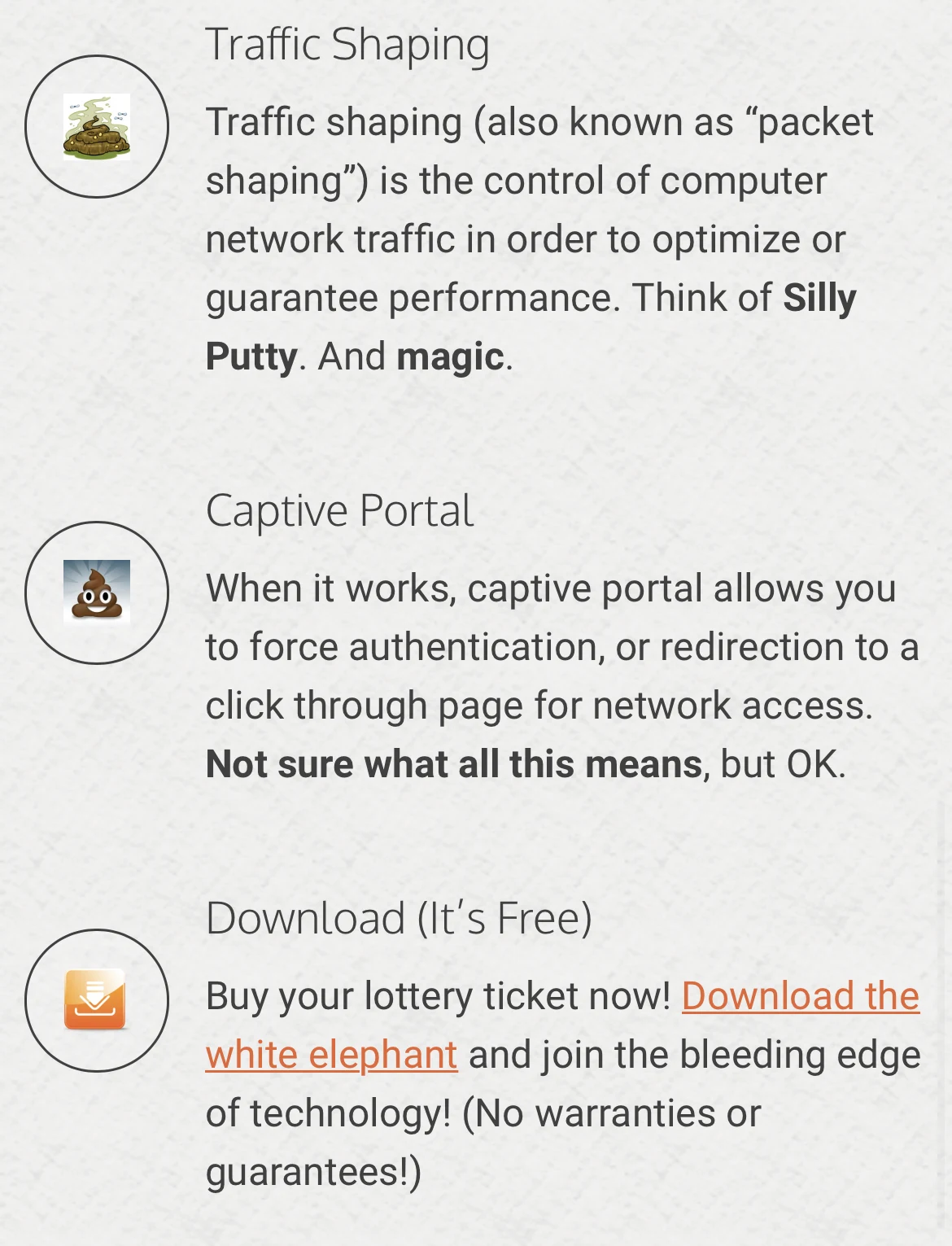

























 )
)


 using rdrama (instant death)
using rdrama (instant death)
 ] Porting TempleOS to user space: a blogpost
] Porting TempleOS to user space: a blogpost



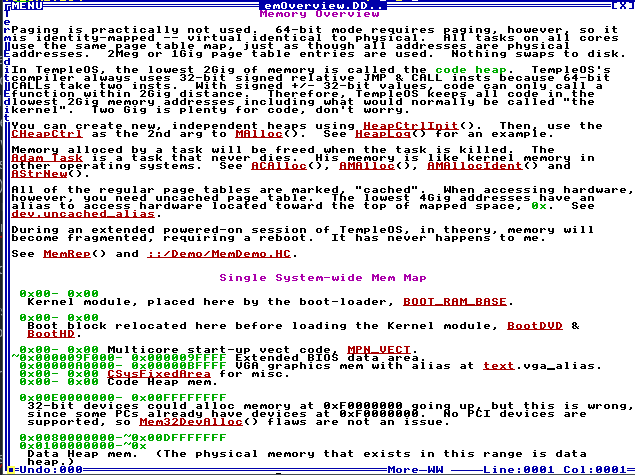


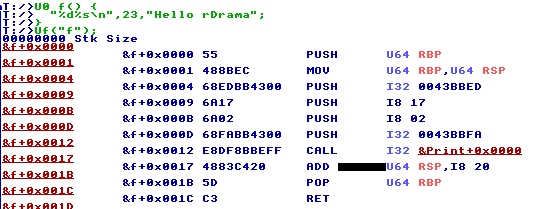

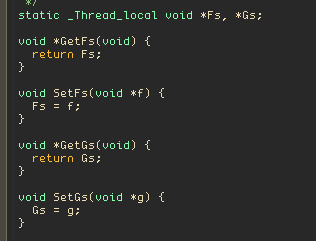
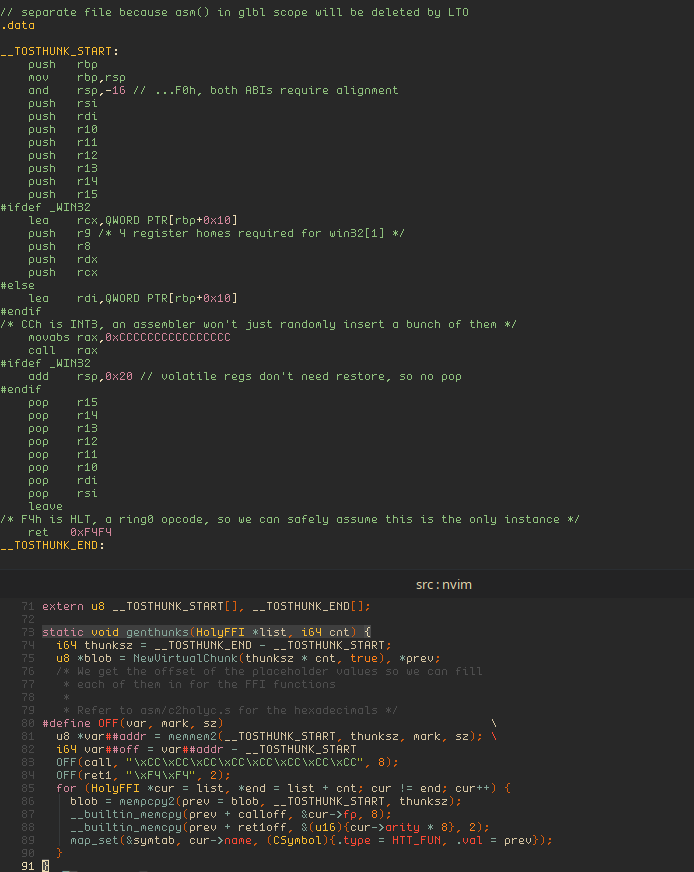

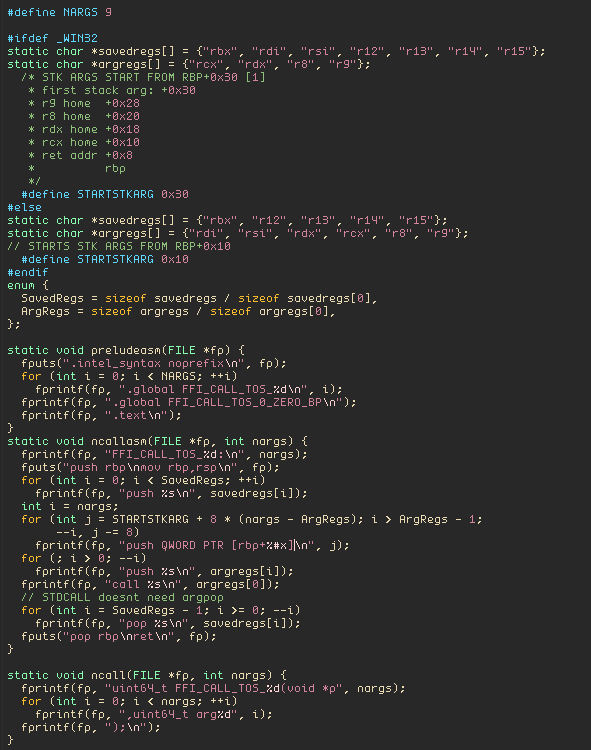
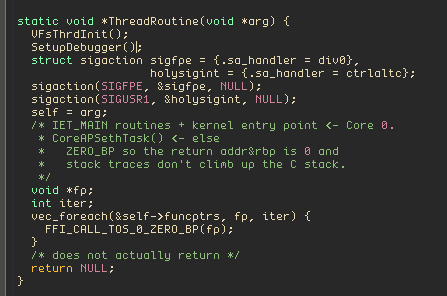
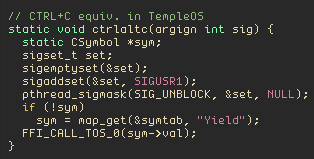
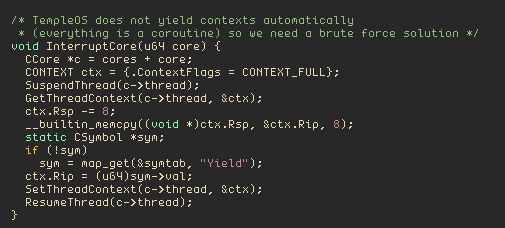
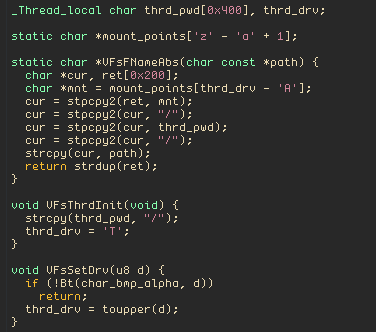

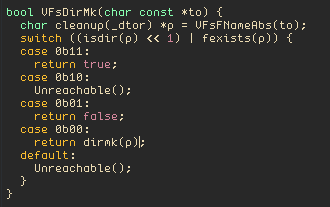
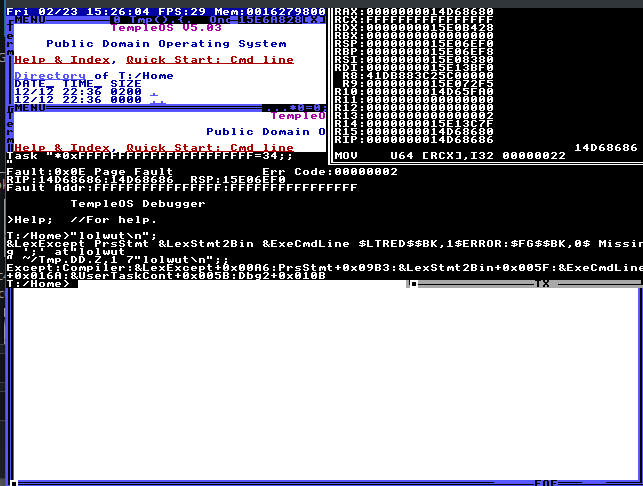

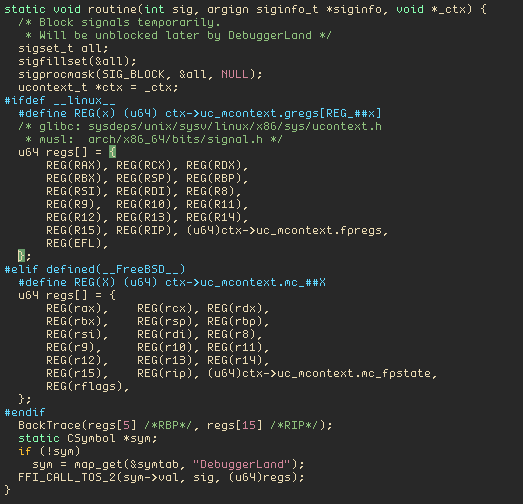
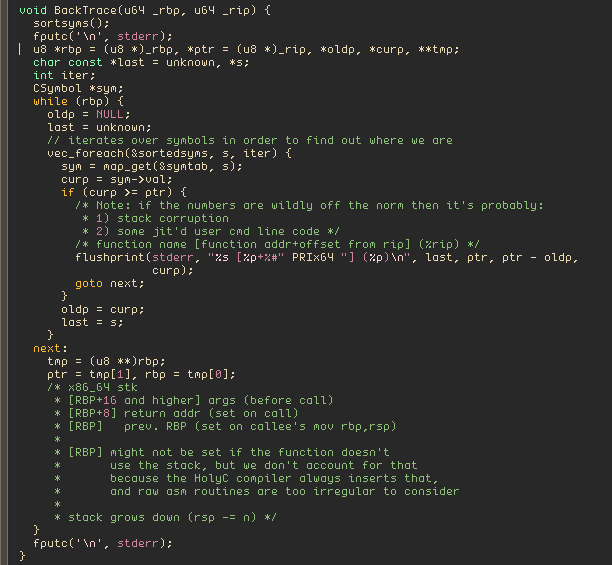
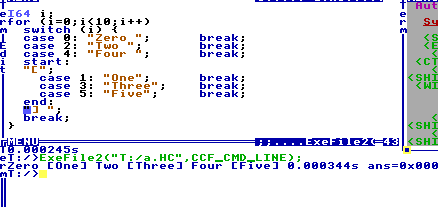


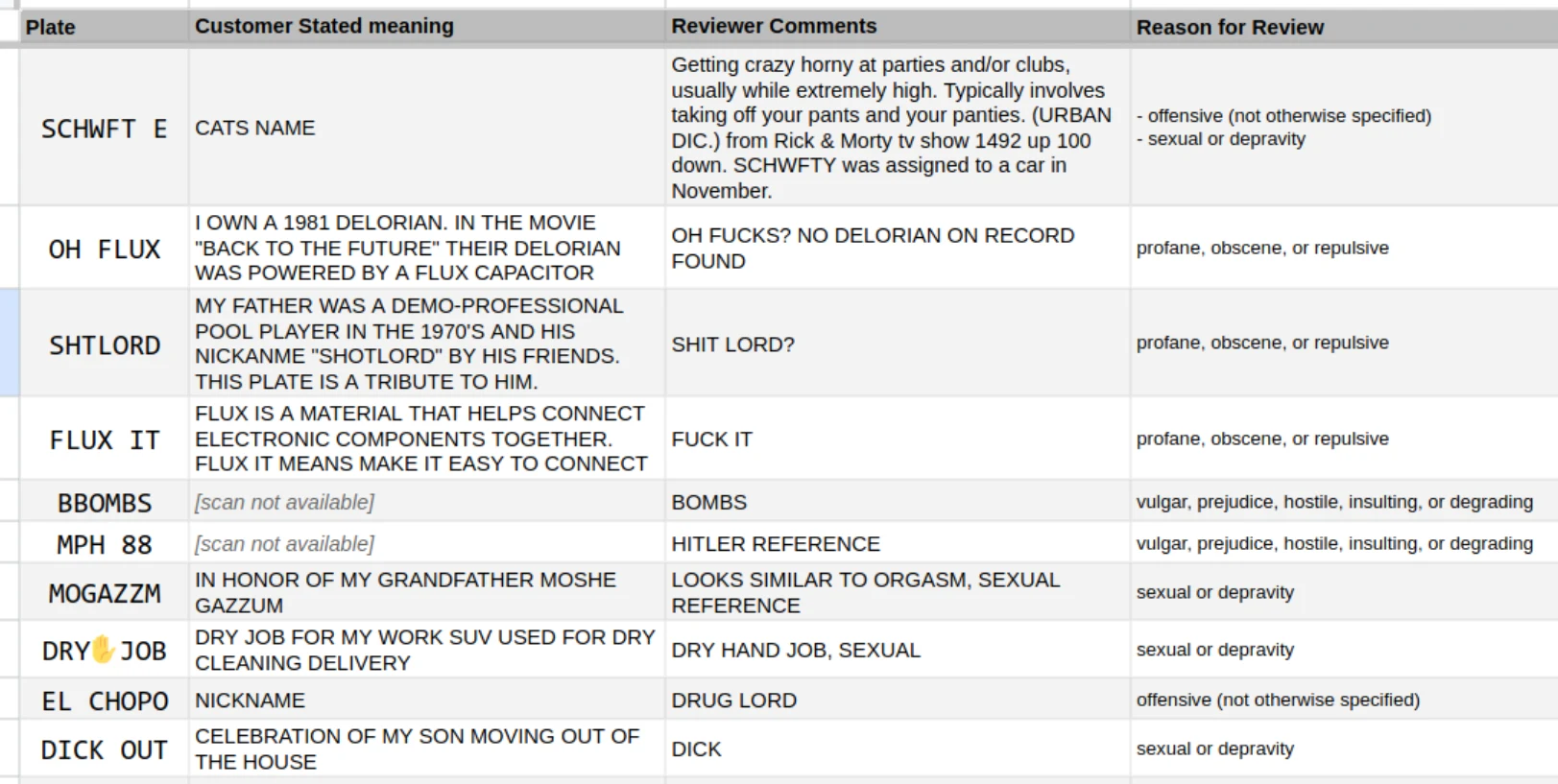




 Anarcho-Syndicalist-Trotskyist-Stalinist Cuban Revolutionary
Anarcho-Syndicalist-Trotskyist-Stalinist Cuban Revolutionary 
 PSA: You can use Adobe's new generative fill feature standalone on their site for free
PSA: You can use Adobe's new generative fill feature standalone on their site for free 







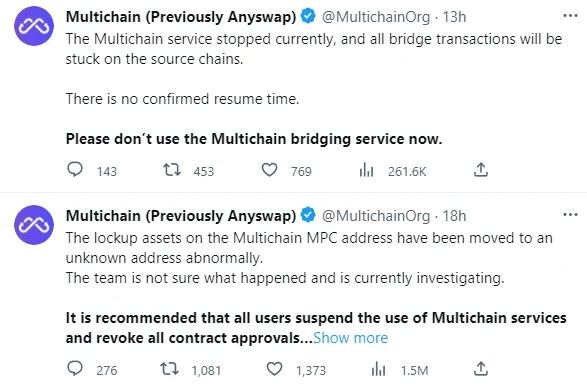




 Heads-up: Reddit is quietly restoring deleted AND overwritten posts and comments
Heads-up: Reddit is quietly restoring deleted AND overwritten posts and comments 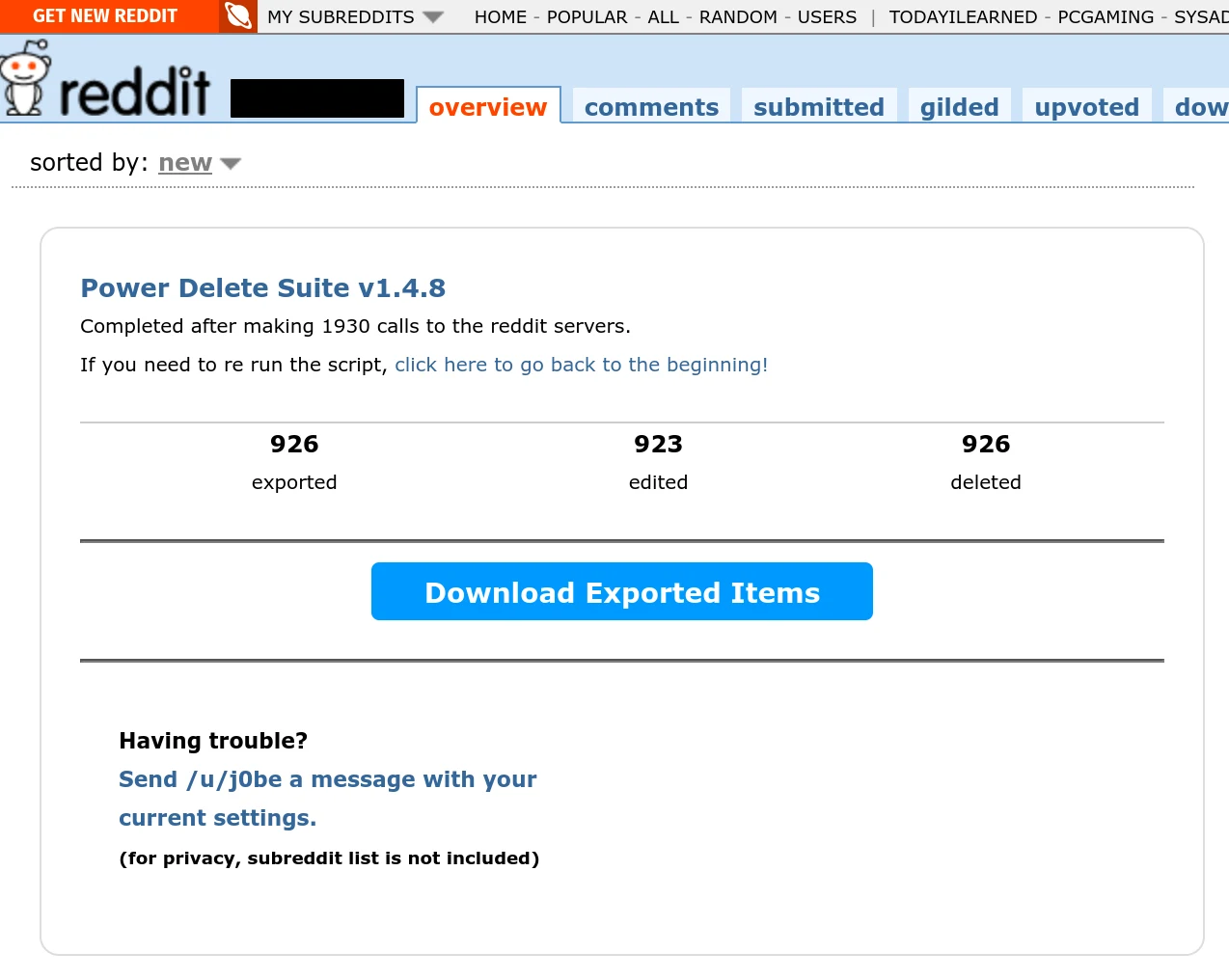
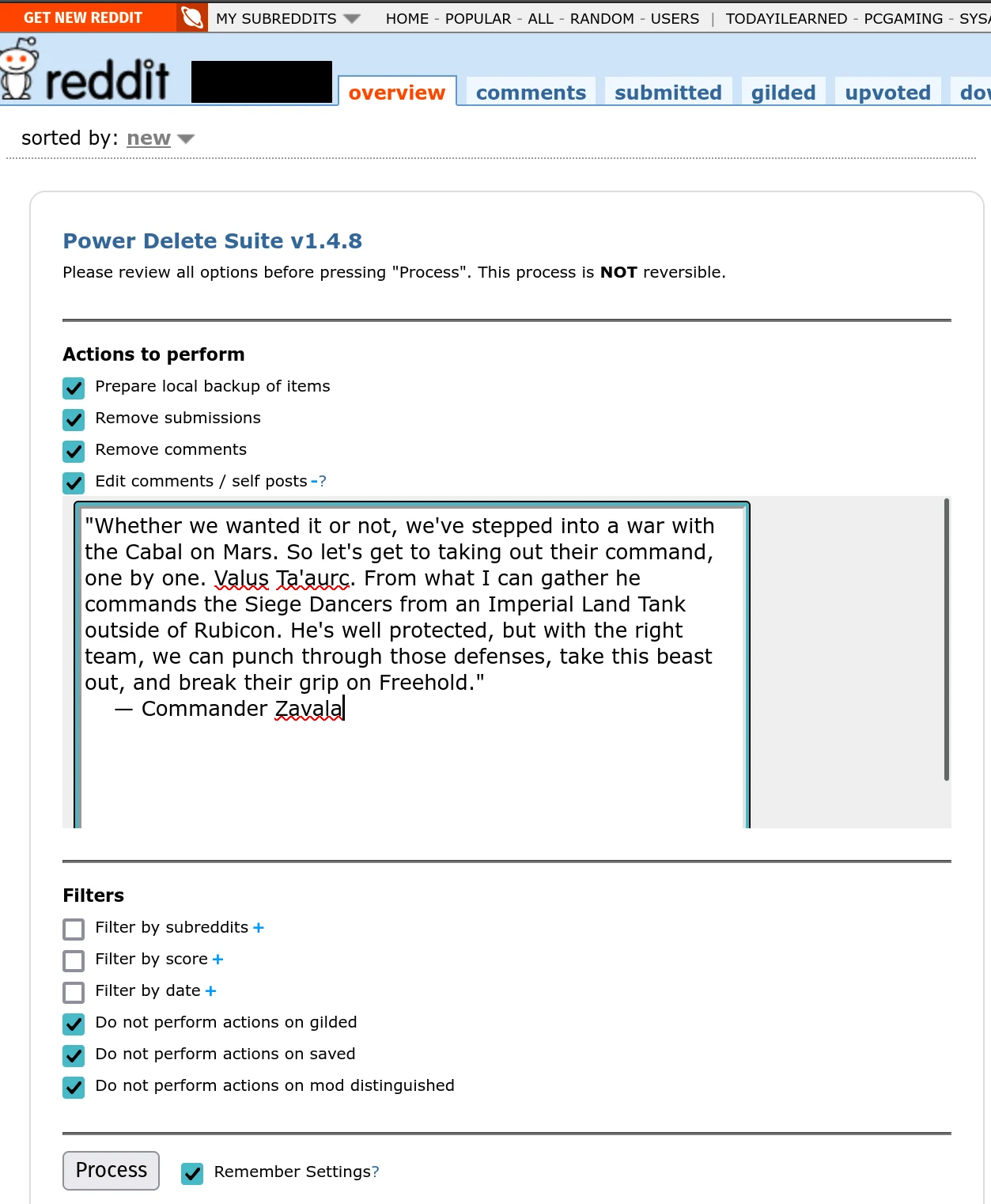

















 hires codecel
hires codecel  to spends months writing bad code
to spends months writing bad code  , sneeds
, sneeds  when codechad
when codechad  comes to clean it up (and Does It For Free
comes to clean it up (and Does It For Free  )
)



 touch foxglove NOW
touch foxglove NOW 

